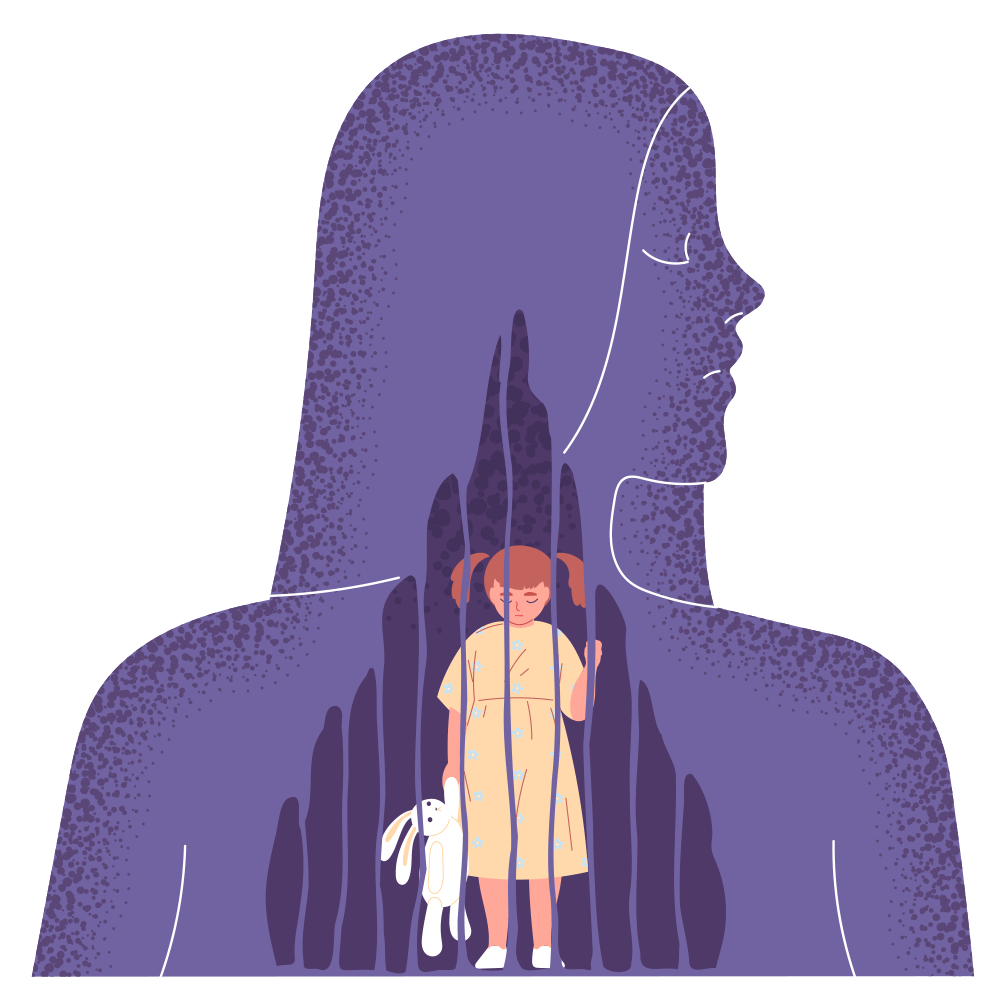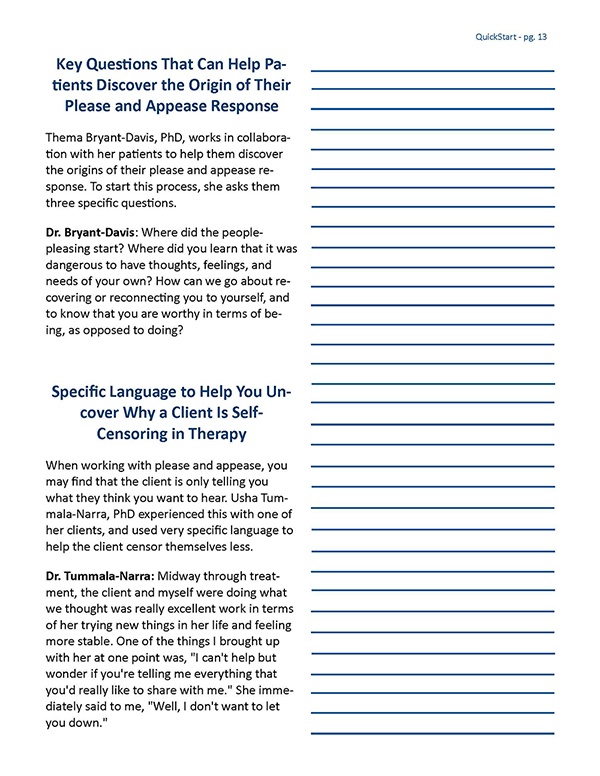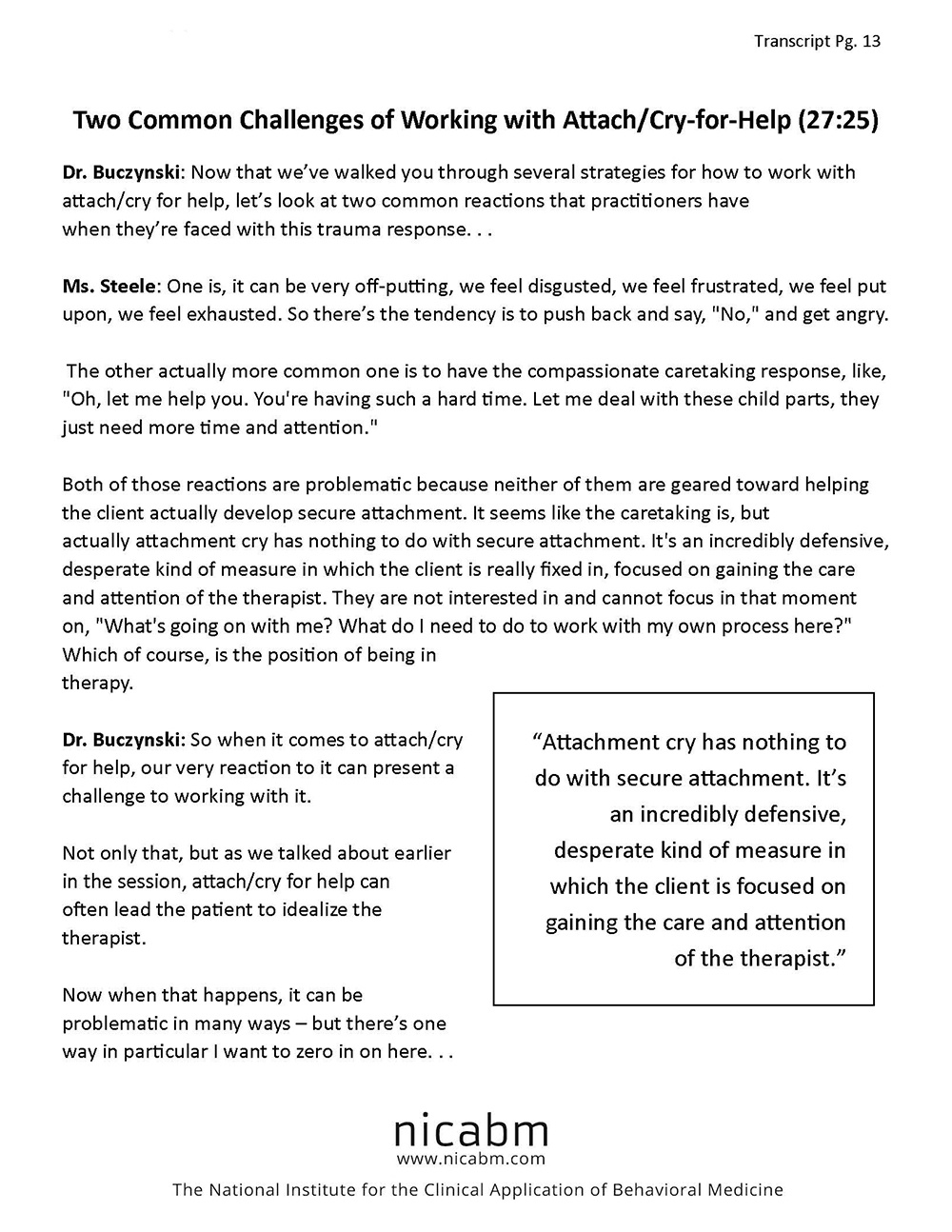How to Identify and Address the Survival Responses That Perpetuate Suffering and Block Therapy
Develop a more targeted and nuanced approach to treating trauma

 There’s been a breakthrough in the way we treat trauma.
There’s been a breakthrough in the way we treat trauma.
For years, clients have presented with defensive adaptations to trauma that don’t fit within the fight-flight-freeze model you learned in grad school.
And without the tools to identify and address these (often subtle) adaptations, many clients were left stuck, stagnant, and suffering.
But recently, the top minds in our field have developed strategies to help us take a more targeted and nuanced approach with these “emerging” trauma responses . . .
. . . and become more effective in our ability to help clients overcome unresolved trauma.
That’s why we asked a few of those top minds to share how they identify and work with trauma responses that fall outside the fight-flight-freeze model.
How to Work with Emerging Defense Responses to Trauma (Beyond the Fight/Flight/Freeze Model)

Attach/Cry-for-Help: Perhaps the Least Understood Defense Response
Janina Fisher, PhD Stephen Porges, PhD
Pat Ogden, PhD Deb Dana, LCSW Kathy Steele, MN, CS
- Specific Behavioral Patterns That Can Help You Recognize a Client’s Attach/Cry Response
- Why This Response Often Produces the Opposite of What a Client Wants (and How That Can Complicate Treatment)
- How to Work with Attach/Cry Through a Polyvagal Lens
- One Disorder That Is Commonly Misdiagnosed in Clients Who Enact Attach/Cry (and How to Differentiate Between the Two)
- How a Clinician’s Natural Instincts Can Backfire When Working with Attach/Cry (and What Approach to Take Instead)
- Strategies to Establish Effective Boundaries with Clients Who Enact Attach/Cry
- How to Keep Clients (and Yourself) Regulated When Working with Attach/Cry
- Two Common Challenges of Working with Attach/Cry (and How to Overcome Them)

Collapse/Submit: The Defense Response of Last Resort
Ruth Lanius, MD, PhD Deb Dana, LCSW Pat Ogden, PhD
- Four Specific Ways Collapse/Submit Can Present in a Client (and One Common Disorder That Can Mask Its Presence)
- Strategies to Stay Grounded and Clinically Effective When Working with a Client in Collapse/Submit
- Why a Habitual Collapse/Submit Response Can Leave Clients Vulnerable to More Trauma
- The Neurochemical Reactions That Activate a Client’s Collapse/Submit Response
- How to Engage a Client’s Sympathetic Nervous System Without Pushing Them into a Fight/Flight Response
- One Way to Bring Your Client Out of Collapse/Submit During a Session

Please and Appease (the Fawn Response): The Defense Response of Self-Erasure
Thema Bryant, PhD Usha Tummala-Narra, PhD Deb Dana, LCSW
- Strategies to Recognize and Attune to a Client’s Please and Appease Response
- How a Client’s Please and Appease Response Can Derail Therapy (and Specific Precautions to Take When Working with It)
- Cultural Factors to Consider When Working with a Clients’ Please and Appease Response
- How Please and Appease Can Force Clients to Neglect Their Own Needs (and Strategies to Help Them Become More Assertive)
- Key Questions to Help Clients Understand the Origin of Their Please and Appease Response
- How to Work with Please and Appease at the Level of the Nervous System
Register Here for $197
You’ll get all the videos, audios, transcripts, and learning tools, plus 5 bonuses that give you even more strategies for working with defense responses to trauma.
Up to 4 CE/CME Credits or Clock Hours are available for purchase at checkout.
Click HERE to get information about CE/CME credits and clock hours as well as speaker disclosures
You Are Protected By
NICABM’s Money-Back Guarantee
We invite you to register for this training program without any risk. Unless you are completely satisfied, we will refund your money. Just let us know within 30 days from the date of registration. We are that confident that you will find this information to be more than you expected.
For This Short Course, We Brought Together Some of the Top Experts in the Field

Pat Ogden, PhD
Pioneer in Somatic Psychology; Founder and Director of Sensorimotor Psychotherapy Institute (SPI); Co-founder of the Hakomi Institute; Author of Sensorimotor Psychotherapy: Interventions for Trauma and Attachment.

Stephen Porges, PhD
Developer of Polyvagal Theory; Distinguished University Scientist at the Kinsey Institute at Indiana University Bloomington and Research Professor in the Department of Psychiatry at University of North Carolina Chapel Hill.

Ruth Lanius, MD, PhD
Professor of Psychiatry and Director of the Post-traumatic Stress Disorder (PTSD) research unit at the University of Western Ontario. Coauthor of The Impact of Early Life Trauma on Health and Disease: The Hidden Epidemic, and Healing the Traumatized Self: Consciousness, Neuroscience, Treatment.

Thema Bryant, PhD
Licensed psychologist specializing in relief and empowerment of marginalized persons; Professor of Psychology in the Graduate School of Education at Pepperdine University; author of Thriving in the Wake of Trauma: A Multicultural Guide.

Janina Fisher, PhD
Licensed clinical psychologist and former instructor, Harvard Medical School; Advisory Board member of the Trauma Research Foundation

Usha Tummala-Narra, PhD
Professor of Counseling, Developmental, and Educational Psychology at Boston College; Author of Psychoanalytic Theory and Cultural Competence in Psychotherapy; Co-author of Applying Multiculturalism: An Ecological Approach to the Multicultural Guidelines.

Kathy Steele, MN, CS
Psychotherapist, consultant and trainer; expert on complex trauma, dissociation, attachment and therapeutic impasse; past president of the International Society for Traumatic Stress Studies; co-author of Treating Trauma-Related Dissociation: A Practical, Integrative Approach.

Deb Dana, LCSW
Coordinator of the Traumatic Stress Research Consortium at the Kinsey Institute; Developer of the Rhythm of Regulation Clinical Training Series; author of Polyvagal Theory in Therapy.

Bessel van der Kolk, MD
Neuroscientist and Professor of Psychiatry at Boston University Medical School. Author of The Body Keeps the Score: Brain, Mind, and Body in the Healing of Trauma.
You’ll Get the Experts’ Best Strategies In a Concise, Streamlined Format
Here’s an example from the course:

Course Director
Ruth Buczynski, PhD
Here's What You'll Get:
Everything is yours to keep forever in your professional library
|
|
Downloadable videos so you can watch at your convenience, on any device |
|
|
Audio recordings you can download and listen to at home, in the car, at the gym or wherever you like |
|
|
TalkBack Segments to distill key ideas (this is where we “land” the session) |
|
|
Next Week in Your Practice sessions to give you concrete strategies to use with patients |
|
|
Professionally-formatted transcripts of the sessions, to make review and action simple |
|
|
Five downloadable bonus videos to help you work more effectively with defense responses to trauma |
Get 5 Bonuses That Give You Even More Strategies for Working with Defense Responses to Trauma

Bonus 1: How to Work with Defense Responses to Trauma – a Q&A Session
Janina Fisher, PhD
- Differentiating Between a Trauma Defense Response and Unhelpful Coping Responses
- Practical Steps to Engage Clients Who Are Caught In an Attach/Cry Response
- How to Bring Clients Out of a Hypoaroused Collapsed State
- How to Track a Client’s Please and Appease Response In Session

Bonus 2: How the Attach/Cry Response Can Sometimes Present as Collapse – a Case Study
Kathy Steele, MN, CS
- How to Determine If a Client’s Collapsing Episodes Are Part of an Attach/Cry Response
- A Counterintuitive Approach That Can Help Stabilize a Client’s Attach/Cry Response
- How Traditional Approaches to Attachment Trauma Can Activate a Client’s Attach/Cry Response
- One Key Paradox of the Attach/Cry Response (and How to Approach It)
- Psychoeducation That Can Reduce the Feelings of Shame Your Client Might Feel About Their Attach/Cry Response

Bonus 3: A Polyvagal Approach to Working with Emerging Defense Responses
Deb Dana, LCSW
- How to Understand Collapse/Submit from a Polyvagal Perspective
- A Polyvagal-Informed Approach to Work with a Client’s Attach/Cry-for-Help Response
- What’s Happening In the Nervous System During the Please and Appease Response

Bonus 4: Practical Exercises to Help Bring a Client’s Social Engagement System Back Online
Deb Dana, LCSW
- How Trauma Can Shut Down a Person’s Social Engagement System
- Two Strategies to Help Revive a Client’s Social Engagement System

Bonus 5: How to Make Trauma Treatment More Effective By Targeting the Nervous System
Stephen Porges, PhD
- Why It’s Crucial to Focus on the Nervous System When Treating Trauma
- How to Help Regulate a Client’s Nervous System Through Movement
Register Here for $197
You’ll get all the videos, audios, transcripts, and learning tools, plus 5 bonuses that give you even more strategies for working with defense responses to trauma.
Up to 4 CE/CME Credits or Clock Hours are available for purchase at checkout.
Click HERE to get information about CE/CME credits and clock hours as well as speaker disclosures
You Are Protected By
NICABM’s Money-Back Guarantee
We invite you to register for this training program without any risk. Unless you are completely satisfied, we will refund your money. Just let us know within 30 days from the date of registration. We are that confident that you will find this information to be more than you expected.
Plus, You’ll Get Practical Tools to Help You Take Action Immediately and Effectively
Synthesize Key Concepts So You Can Use Them Immediately
In the Critical Insights sessions, Ron Siegel, PsyD and Ruth Lanius, MD, PhD join Ruth Buczynski, PhD to dig more deeply into the key ideas. Our job is to make yours easier by streamlining the information from each module and making sure each point is crystal clear. We’ll clarify critical concepts and break it all down so you can gain confidence in your understanding.

Discover Concrete Practices That Will Work in Your Life, and with Your Patients
In the Focus on Application sessions, Usha Tummala-Narra, PhD, Kelly Wilson, PhD and Megan Schmidt, PsyD give you specific practices and exercises you can use with your clients right away. For each module, you’ll get solid techniques and practical interventions that will help you apply what you’ve just heard.

Uncover Core Ideas and Techniques at-a-Glance So You Have a “Cheat Sheet” When You Need It Most
The QuickStart Guide will help you stay fresh and confident as you turn these teachings into action. We’ve gathered all the essential tools and methods from the program into a concise, easy-to-use guide so you can quickly review and apply these ideas when you need them most. It’s an at-a-glance reference to the most powerful concepts and strategies for working with patients who have experienced trauma.

Quickly Recall Crucial Details So You Can Apply Them with Confidence
Our Professional Transcript will help you reinforce key ideas so you can integrate them into your life and work. We’ve designed your transcript with an easy-to-use table of contents, clear, organized formatting, and helpful highlight quotes so you’ll have the information and exercises you need at your fingertips.

Here's What Your Peers Have Experienced In NICABM Programs

. . . the content is clear, simple and the very latest insights from the most outstanding people in the field of trauma.
“These presentations are fascinating and easy to watch as the technical presentation is very good, and the content is clear, simple and the very latest insights from the most outstanding people in the field of trauma. You would need to read a lot of books to end up with as much good quality information as you get from watching this program.”
Liz Kirsopp, Psychotherapist
Northumberland, UK

This program exceeded all my expectations . . .
“I am always open to learning, and this program exceeded all my expectations. Even though I am very familiar with many of the presenters, to see them in action is inspirational. As a seasoned Art Therapist and supervisor, I am always looking for innovative ways of looking at the clients and treating their issues. I already used the knowledge I gained with clients, and especially in supervision. Having purchased the Gold Package, it is like always having a personal supervisor at my beck and call.”
Hannah Sherebrin, Art Therapist
London, Ontario, Canada

I am more confident in handling my challenging client . . .
“After this program I feel that I am more confident in handling my challenging clients. I have gained some new tools to add to my toolbox. I cannot recommend this program enough.”
Katie Stark, MA, LPC, NCC
Waterford, Michigan, USA

. . . evidenced based course to get a "helicopter" overview on trauma treatment . . .
“These NICABM 5 modules on trauma management is an excellent value for money evidenced based course to get a “helicopter” overview on trauma treatment from the professional experts.”
Su Keng Gan, Clinical Counsellor/Psychotherapist
Singapore, Singapore
Why the Transcript Is Essential:
- The transcript makes it easy to go back and double check concepts, citations and names that are mentioned
- We put in a table of contents to make it easy for you to find the exact part of the webinar you need
- Having the concepts already written allows you to take notes on how you’re going to use the ideas rather than transcribing the ideas
- Some people simply learn better by reading than by listening or watching
- You will be able to print out and share techniques presented in the session with your patients

“I really liked being able to follow along with the transcripts as I listened…it was nice not to feel like I had to take notes. I really feel like I remember more when I both hear and see at the same time.”
Mary Ellen McNaughton, Masters in Counseling, Psychology Counselor
Kelowna, British Colombia, Canada
You Are Protected By
NICABM’s Money-Back Guarantee
We invite you to register for this training program without any risk. Unless you are completely satisfied, we will refund your money. Just let us know within 30 days from the date of registration. We are that confident that you will find this information to be more than you expected.
Register Here for $197
You’ll get all the videos, audios, transcripts, and learning tools, plus 5 bonuses that give you even more strategies for working with defense responses to trauma.
Up to 4 CE/CME Credits or Clock Hours are available for purchase at checkout.
Click HERE to get information about CE/CME credits and clock hours as well as speaker disclosures